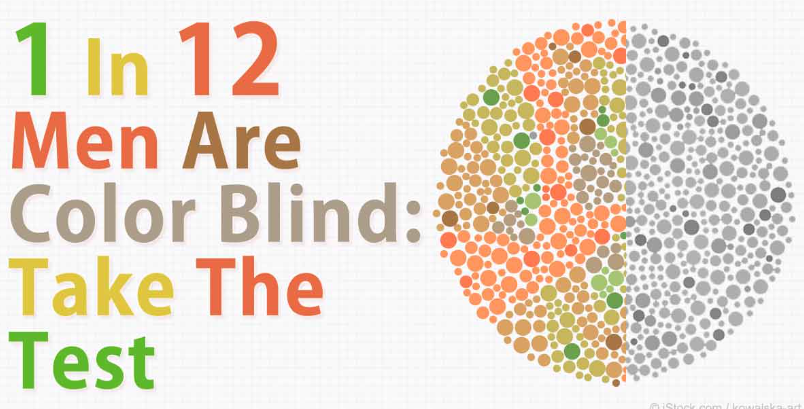What Percent of Men Are Colorblind? Understanding Color Vision Deficiency
Color vision deficiency, commonly known as color blindness, is a condition that affects a significant portion of the population. It is often perceived as more prevalent among men than women. In this article, we will explore the percentage of men who are colorblind, the types of color blindness, the underlying causes, and its impact on daily life.

Test men color blind
1. Understanding Color Blindness
Color blindness refers to a condition in which individuals have difficulty distinguishing between certain colors. It is caused by abnormalities in the photopigments in the cones of the eye, which are responsible for color perception. While most people have three types of cones that enable them to perceive a broad range of colors, individuals with color blindness have deficiencies or anomalies in one or more types of cones.
2. Types of Color Blindness
There are different types of color blindness, including:
a. Protanopia: People with protanopia have difficulty perceiving red light. It appears as a duller shade of gray or brown.
b. Deuteranopia: Deuteranopia is characterized by a reduced sensitivity to green light, making it difficult to distinguish between different shades of green, yellow, and red.
c. Tritanopia: Individuals with tritanopia have difficulty perceiving blue light, causing confusion between blue and green colors.
3. Prevalence of Color Blindness in Men
Color blindness is indeed more prevalent among men than women. The percentage of men affected varies depending on the type of color blindness:
a. Red-Green Color Blindness: The most common type of color blindness, affecting the ability to differentiate between red and green, is estimated to affect around 8% of men.
b. Blue-Yellow Color Blindness: Tritanopia, which affects blue and yellow perception, is much rarer, affecting less than 1% of men.
4. Genetic Factors
The higher incidence of color blindness in men can be attributed to genetic factors.
The genes responsible for color vision deficiencies are located on the X chromosome.
Since men have one X and one Y chromosome, a single copy of the defective gene is enough to manifest color blindness.
Women, on the other hand, have two X chromosomes, providing a backup copy of the gene, reducing the likelihood of color blindness.
5. Impact on Daily Life
Color blindness can have practical implications in daily life, particularly in certain professions and activities. People with color vision deficiency may face challenges in occupations that require color differentiation, such as graphic design, aviation, and electrical work. They may also encounter difficulties in distinguishing traffic lights, reading color-coded information, and selecting matching clothing.
6. Testing for Color Blindness
Color blindness can be diagnosed through various tests, such as the Ishihara color test, Farnsworth-Munsell 100 Hue Test, and Cambridge Colour Test.
These tests assess an individual's ability to differentiate colors and identify any deficiencies.
7. Coping Strategies and Support
While there is currently no cure for color blindness, individuals can develop coping strategies to navigate daily challenges.
These strategies may include relying on contextual cues, using technology and apps designed for colorblind individuals, and seeking support and understanding from friends, family, and employers.
8. Awareness and Education
Increasing awareness and understanding of color blindness is crucial in fostering inclusivity and support for individuals with color vision deficiency. Education about color blindness, its types, and its impact can help create a more accommodating environment that considers the needs of colorblind individuals.

Percent of color blindness in US
Color blindness is a condition that affects a significant percentage of the population, with higher prevalence among men. Red-green color blindness is the most common type, affecting around 8% of men. Genetic factors play a role in the higher incidence of color blindness in men,as the responsible genes are located on the X chromosome. Color blindness can have practical implications in daily life, particularly in certain professions and activities. While there is no cure, individuals can develop coping strategies and seek support from their environment. Increasing awareness and understanding of color blindness is important in creating an inclusive society. By acknowledging and accommodating the needs of colorblind individuals, we can promote a more inclusive and accessible environment for everyone.